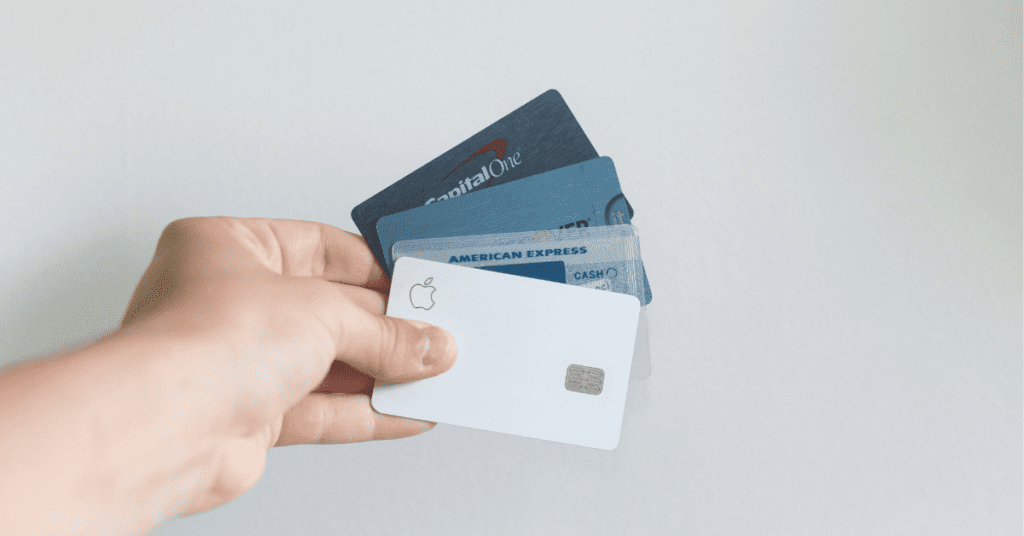

Freelance Writing vs. Graphic Design: Which One is Better for a Profitable Career?
In today’s digital world, freelancing has evolved into one of the most flexible and rewarding career choices. Two highly popular freelancing paths are freelance writing and graphic design.
If you’re planning to enter the freelance world, you might be wondering:
Freelance Writing vs. Graphic Design: Which is better? Which is more profitable? Which is easier to start?
The answer depends on your skills, interests, resources, and career goals.
Freelance graphic design offers a perfect blend of creative freedom, financial opportunity, and personal satisfaction. It allows you to transform your artistic skills into a thriving career, work from anywhere in the world, and collaborate with diverse clients on exciting projects.
Of course, success doesn’t happen overnight. You’ll need to invest in learning design software, mastering visual communication, and building an impressive portfolio. But if you’re passionate, persistent, and committed to improving your craft, freelance graphic design can open up a world of exciting possibilities.
If you love art, design, and storytelling — and you’re willing to put in the effort — freelance graphic design could be the perfect career path for you.
In this ultimate guide, we will break down everything you need to know to help you make the best decision, whether you’re a total beginner or someone considering a career switch.
Understanding Freelance Writing
Freelance writing is an exciting and increasingly popular career path that involves creating written content for a variety of clients. As a freelance writer, you could find yourself writing blog articles, website copy, social media posts, technical documentation, whitepapers, email newsletters, or even full-length eBooks. Essentially, if it involves words, there’s a good chance a freelance writer had a hand in producing it.
Unlike traditional employment, freelance writing offers you the opportunity to work independently. You are not tied to one employer or one type of project. Instead, you can choose assignments based on your interests, skills, and schedule. Whether you’re passionate about health, finance, education, technology, lifestyle, travel, or business, there’s a writing niche where your talents are needed.
In today’s digital world, the demand for high-quality written content is greater than ever. Businesses, entrepreneurs, bloggers, and organizations constantly need fresh content to engage their audiences, improve their SEO rankings, and communicate their messages. That’s why freelance writers are in such high demand.
Why Is Freelance Writing a Popular Choice?
Many people are drawn to freelance writing because of its numerous advantages. If you’re considering a freelance writing career, understanding these benefits can help you make an informed decision.
1. Low Startup Cost
One of the most attractive aspects of freelance writing is that it requires very little financial investment to get started. Unlike starting a physical business, you don’t need to rent an office space, purchase inventory, or invest in expensive equipment.
All you truly need is:
A reliable laptop or computer
A stable internet connection
Strong writing skills
A willingness to learn and improve
Some writers also invest in tools like Grammarly for grammar checking, Hemingway Editor for readability, and project management apps like Trello or Asana. However, many of these tools offer free versions that are sufficient when you’re just starting out.
This low barrier to entry makes freelance writing an accessible career option for students, stay-at-home parents, career changers, and anyone looking for a side hustle.
2. Flexibility
Another significant advantage is the flexibility freelance writing offers. You can work from anywhere — your home, a coffee shop, a library, or even while traveling the world. As long as you have internet access, you can work with clients from different parts of the globe.
Freelance writing also allows you to set your own hours. If you are a night owl, you can work late into the evening. If you prefer working early in the morning and having your afternoons free, you can structure your schedule accordingly. This flexibility makes it easier to balance freelance writing with other responsibilities, such as family commitments, a part-time job, or schooling.
Moreover, you have the freedom to choose the types of projects you accept. You’re not stuck doing work that doesn’t interest you. As you build experience, you can specialize in niches you enjoy and eventually command higher rates.
3. Diverse Niches
One of the most exciting things about freelance writing is the wide variety of niches you can explore. Practically every industry needs written content, which means there’s no shortage of opportunities.
Some popular freelance writing niches include:
Health and wellness: Writing about fitness, nutrition, mental health, and medical topics
Finance: Covering budgeting tips, investment advice, cryptocurrency, and insurance
Technology: Writing about software, gadgets, app reviews, or IT solutions
Education: Creating course content, study guides, and educational blogs
Lifestyle: Covering travel, fashion, food, relationships, and home decor
Choosing a niche not only helps you stand out but also allows you to become an expert in a particular field. Specialized writers are often able to charge more because clients value their in-depth knowledge.
If you are unsure which niche to pick, start by writing in several different areas and notice where you naturally excel or enjoy yourself most. Over time, you can refine your focus and build a strong portfolio around your chosen specialties.
Where to Find Freelance Writing Jobs for Beginners
If you’re new to freelance writing, the idea of finding your first client can seem intimidating. Thankfully, there are numerous platforms designed to connect freelance writers with clients looking for quality content. Here are some of the most popular websites to begin your freelance writing journey:
1. Upwork
Upwork is one of the largest freelance marketplaces. It offers a wide variety of writing jobs ranging from blog posts to technical writing and editing. You create a profile, submit proposals for jobs, and negotiate your rates. Upwork does charge a service fee, but it can be a good place for beginners to build their portfolios and gain experience.
2. Fiverr
Fiverr allows you to create “gigs” offering your writing services. Clients can browse and purchase your gig directly. While it’s known for low-cost services, many writers have successfully scaled their Fiverr businesses to offer premium writing packages.
3. Freelancer.com
Freelancer.com is similar to Upwork in that you can bid for projects posted by clients. It covers a wide range of industries and project types. Beginners can find smaller projects to build their confidence and gradually work up to bigger, higher-paying jobs.
4. ProBlogger Job Board
ProBlogger is a respected name in the blogging community. Its job board frequently lists quality freelance writing opportunities, especially in blogging and content marketing. Many jobs posted here are for reputable clients who are willing to pay competitive rates.
5. BloggingPro
Another excellent job board, BloggingPro focuses on blogging and copywriting gigs. It’s updated frequently, and many of the postings specify that they are looking for beginners or intermediate-level writers.
Bonus: LinkedIn
Don’t underestimate LinkedIn as a source for freelance writing jobs. By optimizing your LinkedIn profile and networking with business owners, content managers, and marketing professionals, you can land freelance writing gigs through direct outreach and referrals.
Tips for Getting Started Successfully
To succeed as a freelance writer, especially as a beginner, it’s important to start strong. Here are a few tips:
Create a portfolio: Even if you have to write a few sample articles for yourself, having a few examples of your writing to show potential clients is crucial.
Learn basic SEO: Clients love writers who understand how to write SEO-optimized content that can rank on Google.
Improve your writing skills: Read regularly, study writing techniques, and seek feedback to continually improve.
Be professional: Meet deadlines, communicate clearly, and deliver high-quality work to build a good reputation.
Understanding Freelance Graphic Design
Graphic design is a creative field centered on producing visual content that communicates messages effectively. In today’s visually driven world, good design is crucial for businesses, brands, and individuals to stand out. Freelance graphic designers play a key role by creating visual assets such as logos, branding elements, website layouts, social media graphics, brochures, advertisements, and product packaging.
The freelance route in graphic design allows artists to work independently, offering their skills and creativity to a diverse range of clients, often across industries and even borders. As a freelance graphic designer, you can pick the projects that excite you the most, work on your own schedule, and build a portfolio that reflects your unique style and talents.
Whether you’re designing a logo that becomes the face of a new startup or crafting marketing materials that boost a company’s sales, graphic designers help bring ideas to life through art and technology. If you have an eye for aesthetics, love visual storytelling, and enjoy creative challenges, freelance graphic design can be a deeply rewarding career choice.
Why Is Graphic Design a Growing Freelance Career?
Over the past decade, freelance graphic design has become one of the fastest-growing freelance industries. Several key factors contribute to its booming popularity:
1. Creativity-Centered Work
One of the biggest reasons people are drawn to freelance graphic design is the opportunity for creative expression. Every project presents a new challenge and a new canvas. Whether you’re designing an edgy new logo for a tech company, creating a dreamy wedding invitation, or building an engaging social media campaign, your artistic skills are front and center.
Graphic design allows you to take abstract ideas and translate them into tangible, visual forms that resonate with audiences. Unlike many jobs that feel repetitive, design work remains fresh and stimulating because each client and project has unique needs and goals.
If you are passionate about art, layout, typography, colors, and visual storytelling, graphic design offers you a fulfilling way to turn your passion into a profession. The constant creative stimulation ensures that your work stays interesting and engaging over time.
2. High-Paying Projects
Freelance graphic designers often command premium rates, especially as they gain experience and specialize in high-demand areas. Branding projects, website designs, UX/UI design, and packaging designs, in particular, are known to pay well.
Businesses understand the value of strong design — a well-designed logo or website can dramatically affect how customers perceive their brand. As a result, many clients are willing to invest in top-quality design to ensure their company’s image is polished, professional, and memorable.
Although beginners may start with modest rates to build a portfolio, there is significant potential to increase earnings over time. Some experienced freelance graphic designers charge hundreds or even thousands of dollars for a single logo, while comprehensive branding packages can command five-figure fees.
Moreover, since many businesses require ongoing design support (such as social media graphics, website updates, or marketing collateral), freelance designers often build long-term relationships with clients, creating a reliable and steady income stream.
3. Massive Demand
In today’s highly visual digital economy, businesses across every industry need compelling visuals. Without strong graphics, companies struggle to establish their brand identity, attract customers, and communicate effectively.
The rise of digital marketing, social media platforms, and e-commerce has only intensified the demand for talented graphic designers. Brands need eye-catching Instagram posts, polished website banners, animated ads, professional-looking infographics, and well-designed newsletters.
Additionally, the global shift towards remote work has made it easier than ever for businesses to hire freelance designers from around the world. Whether it’s a small startup, a nonprofit organization, a local café, or a multinational corporation, companies need good design — and they’re increasingly turning to freelancers to fill that need.
Graphic design is not just a “nice to have” anymore — it’s an essential business investment, which means freelance designers will continue to be highly sought after.
Is Graphic Design a Good Freelance Career Choice?
If you’re wondering whether freelance graphic design is a good career path, the answer is a resounding yes — provided you have a passion for visual storytelling and are willing to invest time in learning the necessary tools and techniques.
Here are a few important points to consider:
1. Necessary Skills and Tools
To succeed as a freelance graphic designer, you need more than just raw talent. You must be skilled in industry-standard design software such as:
Adobe Photoshop (photo editing and manipulation)
Adobe Illustrator (vector-based design and logo creation)
Adobe InDesign (print and layout design)
Figma or Sketch (for web and UX/UI design)
Other useful tools include Canva (especially for social media graphics), Procreate (for digital illustration), and After Effects (for motion graphics).
While mastering these tools takes time, there are plenty of affordable online courses, tutorials, and certification programs that can help you learn at your own pace.
Additionally, you’ll need a basic understanding of design principles, including:
Color theory
Typography
Layout and composition
Branding and visual identity
User experience (UX) design
Investing time in building these skills early on will set you up for long-term success.
2. Building a Portfolio
When it comes to winning freelance clients, your portfolio is your strongest asset. A strong portfolio showcases your style, skills, and versatility. If you’re just starting out, you can create mock projects or volunteer for small businesses and nonprofits to build your body of work.
Make sure your portfolio is:
Visually appealing
Easy to navigate
Focused on the types of projects you want to attract
Accompanied by brief project descriptions explaining the client’s needs, your process, and the results
Having a professional online portfolio (via your own website or platforms like Behance or Dribbble) greatly increases your chances of landing freelance gigs.
3. Finding Freelance Work
Many platforms connect freelance graphic designers with potential clients. Some of the most popular include:
Upwork: A huge freelance marketplace with graphic design categories.
Fiverr: You can set up “gigs” offering specific design services.
99designs: A platform focused exclusively on design work.
Toptal: A premium platform for top-tier freelancers.
LinkedIn: Networking and job hunting can also lead to freelance opportunities.
Additionally, building your personal brand on social media, joining design communities, and reaching out directly to businesses can help you find clients.
Freelance Writing vs. Graphic Design – Skill Sets
Skills Needed for Freelance Writers
Excellent grammar, punctuation, and vocabulary
Ability to research efficiently
SEO knowledge (essential for blog and web writers)
Storytelling and structuring content effectively
Adaptability in tone and voice
Deadline management
If you want to learn how to start freelance writing with no experience, start by improving your writing skills, practicing with blog posts, and building a small writing portfolio.
Skills Needed for Freelance Graphic Designers
Proficiency in software like Adobe Photoshop, Illustrator, InDesign, Canva
Knowledge of color theory, typography, and layout principles
Ability to create eye-catching designs based on client briefs
Branding and UX/UI design skills (for higher-paying gigs)
Attention to detail and consistency
If you are curious about how to become a freelance graphic designer, begin by mastering basic design software and practicing by recreating real-world projects.
Startup Costs and Tools
Freelance Writing Startup Costs
Laptop or computer
Internet connection
Writing tools (Grammarly, Google Docs, Hemingway Editor)
SEO tools (optional, like Surfer SEO)
Cost Estimate: As low as $100–$500 if you already own a computer.
Graphic Design Startup Costs
High-performance laptop or PC
Adobe Creative Cloud or alternatives (Affinity Designer, Canva Pro)
Drawing tablet (optional)
Stock photos or asset subscriptions
Cost Estimate: Between $500–$2,000 depending on tools and software.
✅ Pro Tip: You can offset initial expenses by starting with free trials or cheaper alternatives before upgrading.
How to Build a Freelance Portfolio
How to Build a Freelance Portfolio for Writers
Write 5–10 sample articles on different topics.
Create a personal blog or website showcasing your writing.
Guest post for free on small blogs to build credibility.
Use platforms like Contently or Journo Portfolio.
SEO Tip: Title your pages smartly, e.g., “Best Freelance Content Writer for Technology Startups.”
How to Build a Freelance Portfolio for Graphic Designers
Create design samples for imaginary brands.
Redesign existing websites, logos, or business cards.
Share your work on Behance, Dribbble, or your own website.
Offer free or discounted designs to local businesses initially.
SEO Tip: Use keywords like “Affordable Freelance Logo Designer for Startups” on your portfolio site.
Income Potential: Freelance Writing vs Graphic Design Salary
Freelance Writing Salary
Beginners: $0.03–$0.10 per word
Intermediate writers: $0.10–$0.50 per word
Expert copywriters: $1–$2+ per word
Technical and medical writers: $5,000+ per project
Typical annual freelance writer earnings: $30,000–$120,000+, depending on specialization.
Freelance Graphic Design Salary
Beginners: $10–$30 per design
Intermediate designers: $50–$500 per project
High-end designers: $2,000–$10,000+ for branding projects
UX/UI designers: $75,000–$150,000+ per year
Typical annual freelance designer earnings: $40,000–$150,000+, depending on expertise.
Conclusion: In both fields, specialization = higher rates.
Freelance Writing Tips for Beginners
Niche down: Specialize early (e.g., tech writing, finance writing).
Improve SEO knowledge: Clients value SEO-optimized writers.
Practice every day: Writing is a skill that sharpens with consistency.
Be professional: Meet deadlines, communicate clearly, and follow client instructions.
Pitch consistently: Don’t rely solely on freelancing platforms.
✅ Tip: Learning basic content marketing will massively increase your value to clients.
Graphic Design Freelance Tips for Success
Master your software: Invest time learning design shortcuts and tricks.
Stay updated: Design trends change rapidly — keep your style fresh.
Create value: Focus not just on beauty but also on the purpose behind the design.
Offer packages: Combine logo design + brand kit + social media graphics for higher pay.
Network: Join Facebook groups, LinkedIn groups, and attend webinars.
✅ Tip: UX/UI design skills are among the highest-paying freelance design niches today.
Challenges in Freelance Writing and Graphic Design
Challenges for Writers:
Writer’s block
Clients asking for endless revisions
SEO algorithms changing
Finding consistent, high-paying clients
Challenges for Designers:
Clients micromanaging design projects
Receiving vague or conflicting feedback
High competition globally
Upgrading skills constantly with new tools
✅ Solution: Build a strong brand, set clear boundaries, and continually upskill.
Freelance Lifestyle Comparison
| Feature | Freelance Writing | Freelance Graphic Design |
|---|---|---|
| Flexibility | Very flexible | Flexible but project revisions can extend deadlines |
| Income Potential | High with specialization | Very high with branding or UX/UI |
| Creativity | High (in storytelling) | Very high (in visual creation) |
| Startup Cost | Low | Medium to High |
| Learning Curve | Moderate | Steeper |
Freelance Career Paths: Where Can You Grow?
Growth Options for Writers:
Become a copywriter for ads and sales funnels
Specialize in technical writing or medical writing
Start a content agency
Publish your own eBooks
Offer consulting services
Growth Options for Designers:
Specialize in branding, UX/UI, or web design
Start a design studio or agency
Sell templates and assets on marketplaces
Teach design courses or coaching programs
Create a YouTube channel showcasing tutorials
✅ Reminder: Both fields offer passive income opportunities once you’re established!
Final Verdict — Which Freelancing Career Is Better?
✅ Choose Freelance Writing if:
You love reading, explaining ideas, and storytelling.
You are passionate about research and SEO.
You want a career with very low startup costs.
✅ Choose Graphic Design if:
You love creating visuals and experimenting with colors and layouts.
You don’t mind learning advanced software and investing in tools.
You want to work on high-value branding projects.
Conclusion: Follow Your Passion and Plan Smart
Both freelance writing and graphic design offer immense opportunities.
Neither is “better” universally — the better career for you depends on your passion, skills, investment capacity, and vision.
If you’re excited by words, research, and communication, go for writing.
If you’re drawn to colors, shapes, and aesthetics, graphic design could be your perfect freelance path.
Whatever you choose, the most important step is to start.
🌟 Actionable Next Steps:
Take a free writing or design course.
Build a small but professional portfolio.
Start pitching or applying for small gigs.
Keep improving your craft every day.
The world needs more creators — and your freelance journey can lead to incredible freedom and success!
Frequently Asked Questions About Freelance Writing vs. Graphic Design
1. Which is easier to start: freelance writing or graphic design?
Answer:
Freelance writing is generally easier and cheaper to start because you mostly need a computer, internet, and strong writing skills. Graphic design often requires learning specialized software and may involve higher startup costs for tools and subscriptions.
2. How do I start freelance writing with no experience?
Answer:
To start freelance writing with no experience, create a few writing samples, start a free blog, contribute guest posts, and apply for entry-level gigs. Focus on building a portfolio and improving your SEO writing skills to attract clients faster.
3. Is graphic design a good freelance career in 2025?
Answer:
Yes! Graphic design remains a great freelance career in 2025, especially if you specialize in high-demand areas like branding, UX/UI, or social media design. With businesses constantly needing visual content, skilled designers can earn very well.
4. What are the best freelance writing jobs for beginners?
Answer:
The best freelance writing jobs for beginners include blog writing, SEO content writing, product descriptions, copywriting for small businesses, and ghostwriting short eBooks. Platforms like Upwork, Fiverr, and ProBlogger are great starting points.
5. How much can I earn as a beginner freelance writer?
Answer:
As a beginner freelance writer, you can expect to earn around $10 to $30 per article initially. As you gain experience and specialize in niches like finance, tech, or health writing, you can command much higher rates, even $100+ per article.
6. How do I become a freelance graphic designer without a degree?
Answer:
You can become a freelance graphic designer without a degree by learning design skills through online courses (like Canva, Udemy, Skillshare), building a strong portfolio, offering services on freelance platforms, and networking with potential clients.
7. How do freelance writing vs graphic design salaries compare?
Answer:
Both careers offer strong earning potential. Freelance writers typically earn $30,000–$120,000 per year depending on niche and experience, while graphic designers can earn between $40,000–$150,000, especially if they specialize in UX/UI design or branding.
8. What skills do I need for freelance writing?
Answer:
Essential skills for freelance writing include strong grammar, research ability, storytelling, SEO knowledge, time management, and adaptability in tone and style. Good client communication skills also make a big difference in getting repeat work.
9. What are some freelance writing tips for beginners?
Answer:
Top freelance writing tips for beginners include:
Specialize in a niche
Learn SEO basics
Create a professional portfolio
Pitch consistently
Meet deadlines and communicate professionally
Always keep improving your writing style
10. What are some graphic design freelance tips for success?
Answer:
Some graphic design freelance tips for success include:
Master key software like Adobe Illustrator and Canva
Create a diverse portfolio
Stay updated with design trends
Offer service packages (e.g., logo + branding kit)
Network through LinkedIn and design communities


Hasnain Aslam is a seasoned finance blogger and digital marketing strategist with a strong expertise in SEO, content marketing, and business growth strategies. With years of experience helping entrepreneurs and businesses boost their online presence and maximize organic traffic, he specializes in crafting high-impact content that ranks on search engines and drives real results. His insights empower professionals to build sustainable digital success through strategic marketing and innovative SEO techniques.


